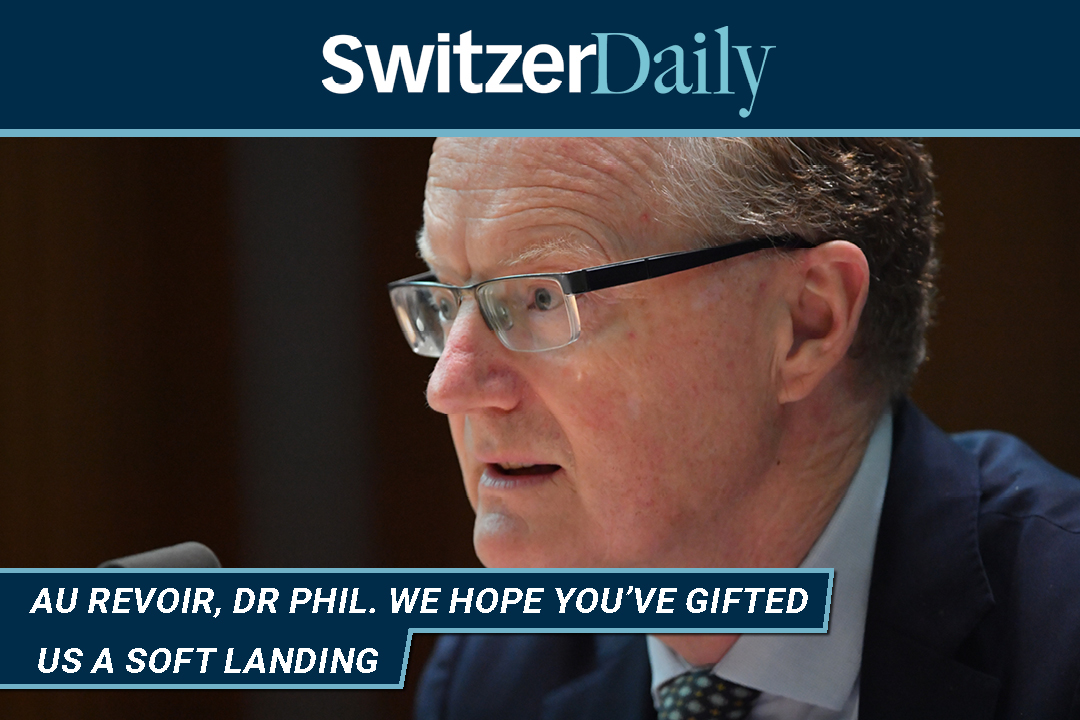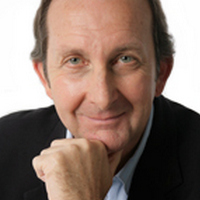

Dr Phil Lowe has nearly left the building at Martin Place in Sydney’s CBD. As a parting gift, he and his board kept interest rates on hold, citing the falling inflation rate as a cautious plus and China’s slowdown as a notable negative.
Before he signs off at the end of the month to hand his job over to our governor-in-waiting Michele Bullock, he heads to Switzerland for a final meeting with the Bank of International Settlements, but this is what his final RBA statement crucially told us:
Dr Phil’s departure would have been so different if he’d backed off his 2020 call that interest rates would be on hold at low levels until 2024. That was a mistake he shared with his board. Even as leaves the building there’s the nagging question: “Has he and his board gone too far?”
If we end up with a soft landing, inflation under 3% and rate cuts by mid-2024, the conclusion will be that Dr Phil did an appropriate job to beat down inflation that was created by the cost pressures of the Coronavirus global lockdown and the excessive government stimulus that was thought to be needed to save us from a deep recession.
Any ‘clown’ economist or politician who wants to bag governments or central bankers for over-stimulating have conveniently forgotten how crazy the pandemic event was in March 2020, when the world embraced lockdown as 15 million people died, if WHO figures can be believed.
Under-stimulating could have led to 10% plus unemployment as economists were predicting before JobKeeper arrived and interest rates were taken down to 0.1%. The big mistake was allowing these low rates to stay so low, once the economy started to recover in 2021 and beyond. Rate rises didn’t start until May 2022, which partly explains why it has taken 12 rate rises in a little over a year to get us to where we are now.
So, what are economists predicting now about rates?
The AFR’s Michael Read tell us: “Jarden chief economist Carlos Cacho said he expected at least one more rate rise by November 2023 due to elevated rates of inflation in the labour-intensive services sector, where business costs are increasing due to higher wages”.
Meanwhile, NAB chief economist Ivan Colhoun said weaker Chinese growth added to the case for rates to stay on hold.
AMP’s chief economist Shane Oliver aligns with my view and said yesterday that “our view remains that the RBA has already done more than enough to slow the economy in order to rebalance demand and supply and bring inflation back to target.”
He thinks there’s a 50% chance of a recession, which means a rate rise in the future would be crazy. Meanwhile, this is what the CBA’s economics team is saying: “Our view remains that the RBA has already done more than enough to slow the economy in order to rebalance demand and supply and bring inflation back to target”.
Shane Oliver thinks the mortgage cliff is starting to hit now and rate rises from here would do more harm than good.
Good luck, Michele. Along with other Aussies who need rate relief, I hope I’ll be able to sing your praises one day.